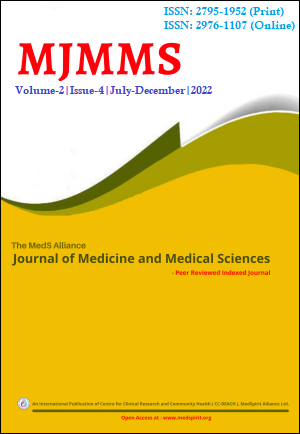Dyslipidemia in Post-menopausal Women of Western Nepal: A Community-Based Comparative Study
DOI:
https://doi.org/10.3126/mjmms.v2i4.53550Keywords:
Cardiovascular disease, Dyslipidemia, Lipid profile, Pre-menopause, Post-menopauseAbstract
INTRODUCTION: Dyslipidemia is a modifiable risk factor for cardiovascular diseases (CVDs). Menopause-related hormonal alterations are responsible for dyslipidemia. Early identification of such risk factors aids in the prevention and prompt management of CVDs. The current study was done to evaluate the prevalence of dyslipidemia in post-menopausal women and compare the lipid profiles between pre-menopausal and post-menopausal women. MATERIALS AND METHODS: This community-based comparative crosssectional study was conducted among the female population of the Siyari rural community, Rupandehi from January 2022 to April 2022. After obtaining verbal and written consent, a total of 322 fasting samples were collected from healthy women based on the questionnaire strategy. Among them 160 were pre-menopausal and 162 were post-menopausal. Serum lipids for Total Cholesterol (TC), Triglycerides (TG), and High Density Lipoprotein (HDL) were estimated by automated Humalyzer 600. Low Density Lipoprotein (LDL), Very Low Density Lipoprotein (VLDL), and lipid ratios were calculated. RESULTS: The prevalence of dyslipidemia was high among post-menopausal women (73.5%). TG, TC, VLDL, LDL, TC/HDL, TG/HDL, and LDL/HDL were significantly increased in post-menopausal women compared to pre-menopausal women (p < 0.001), whereas serum HDL was significantly decreased (p = 0.032). CONCLUSIONS: Higher serum lipids and lipid ratios in postmenopausal women could lead to increased CVD risks and other related complications in the long term.
Downloads
Downloads
Published
How to Cite
Issue
Section
License

This work is licensed under a Creative Commons Attribution-NonCommercial 4.0 International License.




